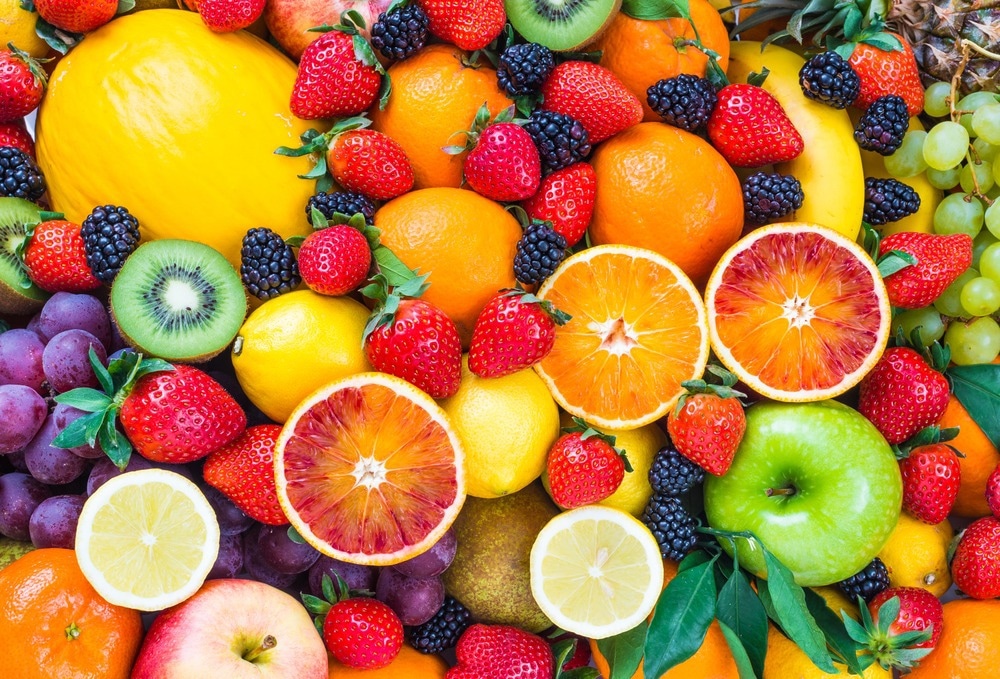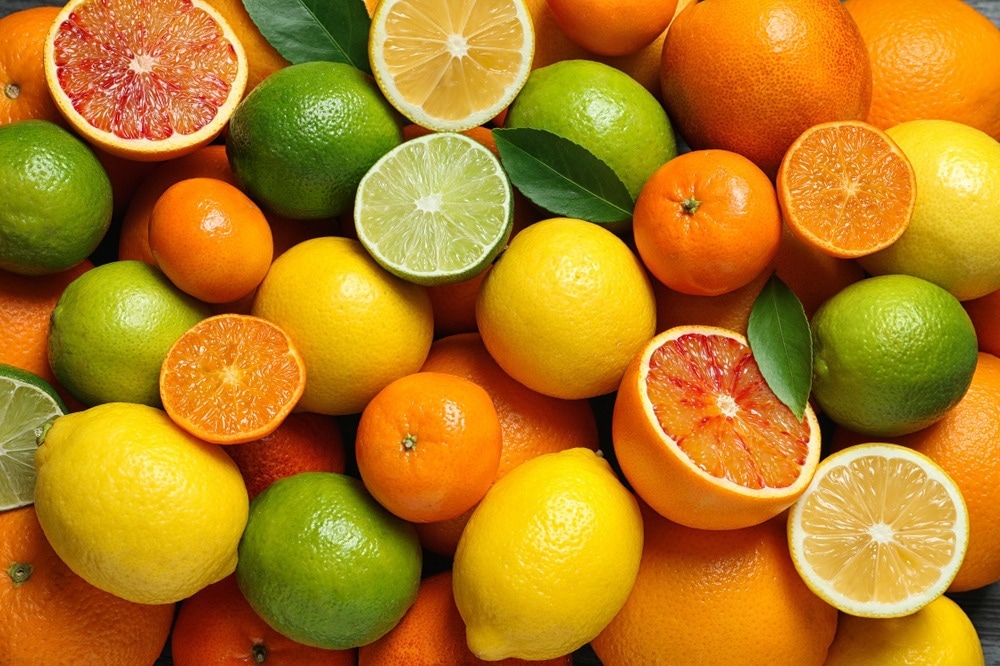The health benefits of eating a healthy diet are well known. Fruit is a major component of a healthy diet, and the CDC has recently warned that Americans don’t consume enough of it. Here, we discuss how fruit flavor profiles are being established with gas chromatography-mass spectrometry (GC-MS), which is helping to ensure the quality and safety of fruit products, which will be increasingly important as the world’s demand for fruit increases.

Image Credit: leonori/Shutterstock.com
Why analyze the flavors in fruit?
Fruit is one of the most popular food groups in the world. Each year, Americans eat roughly 117 pounds of fresh fruit per capita. Around the world, over 206 kilotons of fruit are consumed annually. Global production is increasing, with 909.64 million metric tons produced in 2021, a significant increase from the 576.65 million metric tons produced in 2000.
The quality of fruit products heavily depends on its flavor, which is closely linked with its aroma. Analyzing the flavors in fruit is vital for ensuring fruit products' consistency and safety. Fruit is popular due to its nutritional value, pleasant flavor, and texture. Years of research have shown that hundreds of components are responsible for the flavor of the fruit. For the sweet orange alone, there are more than 200.
GC-MS analysis has frequently been used to detect the active compounds responsible for aroma and flavor from a food matrix. The technique has been proven to be a useful method to ensure the quality of fruit products as well as to detect adulteration, such as the addition of synthetic compounds or natural components that might negatively impact the olfactory properties of the product. Any undesirable changes to the enantiomeric key compounds of fruit can not only alter its flavor profile but may also impose health threats to consumers. Therefore, it is vital to analyze the flavors in fruit.
How is GC-MS used to establish flavor profiles?
GC-MS is a separation technique that can detect volatile and semi-volatile molecules, including alcohols and aromatics, hydrocarbons, fatty acids, hormones, and pesticides. It is often used in applications in food safety and environmental testing.
There are many examples of using GC-MS in analyzing fruit flavors in recent research. For example, one study conducted by researchers in Florida used GC-MS to establish the major odor-active volatiles of two cultivars of strawberries. The study successfully identified 90 volatiles, 54 of which were quantified with GC-MS. The study was important, as it established flavor profiles of two cultivars of strawberry for which there had previously been none. The results helped identify differences in these cultivars of strawberry, bred for the Southern climate, in comparison with their temperate counterparts.
Another study used GC-MS to characterize the aroma-active compounds in sweet oranges. A total of 49 volatile components were identified by GC-MS. The study also highlighted the differences in profile between peel and juice.
In 2017, researchers in Korea used GC-MS to volatile flavor compounds of three citrus fruits: yuzu, lemon, and lime. The study identified 67, 77, and 100 volatile compounds in yuzu, lemon, and lime, respectively. Across all three fruits, limonene, γ-terpinene, and linalool were revealed as the major compounds. The results are important not only for maintaining the quality of fruit products but also for assuring the genuineness and quality of citrus oils.
The aromatic composition of bananas has also been established with the help of GC-MS. One study used the technique to identify and quantify 49 components, several of which were new compounds reported for the first time, including methyl butyrate, 2-hydroxy-2-methylethyl butyrate, 1-methyl butyl isobutyrate, 2,3-butanediol diacetate, and 3-hydroxyethyl hexanoate.

Image Credit: New Africa/Shutterstock.com
Our increasing appetite for fruit
The global population is growing, and the demand for food is growing. The population is projected to have reached almost 10 billion by 2050. In addition, the increasing awareness of the benefits of eating a healthy diet is helping to encourage people to add more fruit to their diets. A wealth of evidence exists that links high fruit intake with a lower risk of several serious diseases, such as heart disease, stroke, and type 2 diabetes. Recent research published in the International Journal of Epidemiology found that eating ten portions of fruit and vegetables per day, double the amount that has previously been recommended, could possibly prevent 7.8 premature deaths globally each year.
With this focus on the health benefits of eating fruit alongside the growing population, it is possible that the global consumption of fruit will increase in the coming years. Therefore, methods such as GC-MS may become more important in establishing the flavor profiles of various fruit and performing quality control processes to protect the quality and safety of fruit products.
Read Next: Secret Sugar; Finding Hidden Sugars in the Food You Eat
Sources:
- Aune, D. et al. (2017) “Fruit and vegetable intake and the risk of cardiovascular disease, total cancer and all-cause mortality—A systematic review and dose-response meta-analysis of prospective studies,” International Journal of Epidemiology, 46(3), pp. 1029–1056. Available at: https://doi.org/10.1093/ije/dyw319.
- Du, X. et al. (2011) “Evaluation of volatiles from two subtropical strawberry cultivars using GC–olfactometry, GC-MS odor activity values, and sensory analysis,” Journal of Agricultural and Food Chemistry, 59(23), pp. 12569–12577. Available at: https://doi.org/10.1021/jf2030924.
- Hong, J.H. et al. (2017) “Determination of volatile flavour profiles of citrus spp.. fruits by SDE-GC-MS and enantiomeric composition of chiral compounds by MDGC-MS,” Phytochemical Analysis, 28(5), pp. 392–403. Available at: https://doi.org/10.1002/pca.2686.
- Jordán, M.J. et al. (2001) “Aromatic profile of aqueous banana essence and banana fruit by gas chromatography−mass spectrometry (GC-MS) and gas chromatography−olfactometry (GC-O),” Journal of Agricultural and Food Chemistry, 49(10), pp. 4813–4817. Available at: https://doi.org/10.1021/jf010471k.
- Only 1 in 10 Adults Get Enough Fruits or Vegetables [online]. CDC. Available at: www.cdc.gov/.../adults-fruits-vegetables.html (Accessed April 2023)
- Per capita consumption of fresh fruit in the United States from 2000 to 2021 [online]. Statista. Available at: www.statista.com/.../ (Accessed April 2023)
- Qiao, Y. et al. (2008) “Characterization of aroma active compounds in fruit juice and peel oil of Jinchen sweet orange fruit (citrus sinensis (L.) Osbeck) by GC-MS and GC-O,” Molecules, 13(6), pp. 1333–1344. Available at: https://doi.org/10.3390/molecules13061333.
Further Reading
Last Updated: May 17, 2023